73 F. high temperature at St. Cloud Thursday.
74 F. average high on June 4.
82 F. high on June 4, 2014.
June 5, 1930: Cloudburst at Waseca. 4.3 inches of rain fell over 24 hours.
June 5, 1915:
This day marked the first of a long stretch of days of measurable rain
at Winton near Ely. Some measurable rain fell on each day until 19th.
The total amount of rain for the fifteen days was over six inches.
Source: Twin Cities National Weather Service.
Hurricane BudBud
Kraehling was a force of nature, a kind and generous man who loved the
weather - but he didn't define himself as a weatherman. He was so much
more.
He offered me sage advice when I took a job at
WCCO-TV, which I'll never forget. "Don't get caught up with the bells
and whistles, Dopplers and whiz-bang effects. Tell a story. Minnesotans
love a good story and they know their weather. Don't talk down to them.
Assume they know more than you do" he said with a wink and a smile. He
was right.
Hurricane Bud (a Category 5 if there ever was
one) didn't take himself too seriously. He was, without question, the
real deal, the Dean of Minnesota Weathermen. He will be missed.
Thursday's soggy swirl: stratus, fog and showers gives way to more sunshine today, with dry weather lingering into the first half of
Saturday. The next ill-timed front drags heavy showers and T-storms across the state during the PM hours
Saturday; a few models are printing out some 1-2 inch amounts up north. Yes, the drought is pretty much over.
A pool of chilly air aloft sparks a few popcorn instability showers
Sunday
afternoon, but the first half of next week looks dry and warm as
temperature mellow into the 80s. Yes, very soon you'll be able to whine
about heat and humidity. 90 degrees
Tuesday afternoon? Bring on a little summer heat!
* Frame-grab above courtesy of Tom Oszman at
TC Media Now, which has an extensive video library of Bud Kraehling in action over the years.
NAM: Heaviest Rains Stay South of Minnesota.
The latest (00z) NAM model run predicts .40" of rain over the weekend;
the best chance of a few inches of rain from heavy T-storms coming over
Iowa. Map courtesy of NOAA and AerisWeather.
Building Heat.
The hottest weather of 2015, to date, arrives early next week with a
few days in the 80s; even a shot at 90F on Tuesday. On average MSP picks
up about 13-14 days at or above 90F during an average summer. This
year, with El Nino continuing to build, I suspect we'll wind up with
more than that number by late September. Place your bets. GFS 2-meter
surface temperatures: NOAA and AerisWeather.
Summer Flashback.
Relatively comfortable 70s spill over into the weekend; a dry Friday
and dry start to Saturday giving way to a few showers and T-showers
Saturday PM, but probably not severe. We may see more sun on Sunday with
instability T-showers most likely PM hours over northern Minnesota. And
then it heats up: 80s Monday into Wednesday with a good chance of
enjoying 90 degrees Tuesday.
Most of Minnesota Is Drought-Free.
What a difference a week makes. A month too. In just the last week the
percentage of Minnesota in moderate drought has fallen from 24% to 12%.
Last week 87% of the state was abnormally dry; now that number is down
to 51%. As you can see on the
U.S. Drought Monitor map
above most of the state, especially central and southern counties now
have sufficient soil moisture. Amazing how fast the pattern turned.
Sea Levels In Retreat A Sure Sign El Nino's Grip is Tightening. Here's the intro to an interesting story at
The Sydney Morning Herald: "
El
Niños are well known for unleashing droughts, hotter-than-usual weather
and paradoxically worse frosts in Australia, but they also drive
remarkable - if temporary - changes to global sea levels. While the
shifts under way are so far barely discernible along the Australian
coast, pointers of the forces are more evident in countries to
Australia's north. "The western Pacific has already dropped about 20cm
below its normal height, and the eastern Pacific - because it's warmed
up, it's expanded – is 20-30cm higher than normal," Andrew Watkins, head
of climate prediction services at the Bureau of Meteorology, said..."
El Nino To Disrupt Rains, Cut Africa, East Asia Harvests, Scientists Say. Reuters
takes a look at some of the potential impacts of a rapidly warming
Pacific ocean creating a domino effect, downwind. Here's a snippet: "...
Parts of China,
Indonesia and India are also expected to be seriously affected by El
Nino this year, Oscar Rojas, a senior official at the U.N. Food and
Agriculture Organization (FAO), told the Thomson Reuters Foundation in
an interview on Monday. "We are monitoring for extreme droughts," Rojas said, adding that it is not yet possible to estimate potential crop losses.
The El Nino phenomenon is based on Pacific Ocean waters becoming
unusually warm, and altering global weather patterns. The last El Nino
happened in 2009-2010, and it usually lasts about one year..."
June 3 Sea Surface Temperature Anomalies above courtesy of the
Australian Bureau of Meteorology.
From Multi-Year Drought to Flash Flooding: "Weather Whiplash" Explained. ThinkProgress takes a look at the increasingly wild swings - is it a fluke or a trend? Here's an excerpt: "...
There
are two key, related reasons why the global warming century will be one
of increased weather whiplash. First, multiple studies project the
normal climate for much of the United States will become moderate to
severe drought. At the same time, a warming-driven moister atmosphere is
already delivering more and more of the rainfall we do see in the form
of deluges. That means weather whiplash. Second, more and more
observations and analyses are finding that key types of extreme weather —
especially droughts and deluges — are becoming longer and stronger
because of changes in our atmosphere that cause weather patterns to get
“stuck.” And many studies, including a new one out Monday, ties those
blocking patterns to something called “Arctic amplification,”
which refers to the fact that the Arctic is warming much faster than
the rest of the Northern Hemisphere (in part because of Arctic sea ice
loss)..."
America's Forests Are Facing A Wildfire Crisis.
National Journal
provides some perspective on the perpetual drought out west and the
possible impact on fire potential later in the season; here's an
excerpt: "...
This summer's wildfire season could be even worse—and
it very likely will break the bank. Bone-dry conditions in the West put
vast stretches of California, Oregon, and Washington at risk for
devastating wildfires. The U.S. Forest Service predicts that it could
spend as much as $1.6 billion fighting fires this year. Over the past
decade, wildfires have grown larger and more severe. A changing climate,
intense drought, property development near parks and forests, and a
build up of quick-to-ignite forest debris have all contributed to a new
normal of costly and difficult-to-contain wildfires..." (File image: U.S. Forest Service).
10 States Where Hurricane Damage Will Cost The Most. Fortune has an interesting story about hurricane risk - Florida is in a class by itself. Here's an excerpt: "...
But
with every hurricane season, millions more homes are put at risk of
damage from storm surges. The real estate data firm CoreLogic released a
report on Thursday that estimates that this hurricane season, 6.1
million homes will be at risk of such damage, the total value of which
is a staggering $1.5 trillion. Some of the places where homes are most
at risk, like Florida and Louisiana, might not surprise you. But
Hurricane Sandy proved that the Northeast isn’t safe from serious storm
surge damage, and states as far north as Massachusetts are in peril..."
Hurricane Blanca May Spare Cabo.
The latest guidance weakens Blanca faster, taking the core of the storm
west of Cabo San Lucas, Mexico. Check out more details at my new
favorite tropical site,
tropicaltidbits.com.
Radar Is Better, And Methods For Informing The Public About Tornadoes Are More Diverse. Here's a snippet from an interesting story at
Kearney Hub: "...
Rosenlund
believes that people should not depend too much on outdoor warning
sirens, because they don't adequately notify people who are indoors. It
is best, he said, if they employ some of the cell phone or text
technologies, as well as radio, television and weather radios. Rosenlund
is a big fan of weather radio, which is officially known as the
National Oceanic and Atmospheric Administration Alert Radio. He believes
that every home should have weather radio, because it's "the first and
most authoritative resource for Weather Service warnings..."
Photo credit above: AP Photo/Sean Waugh, NOAA. "This
June 15, 2013 photo, made available courtesy Sean Waugh, NOAA, shows a
team of researchers from the University of Colorado and NOAA sampling
surface boundaries in the Pawnee National Grasslands, near Grover, Colo.
as a storm develops over Wyoming. Colorado and Nebraska researchers say
they’ve collected promising weather data by flying instrument-laden
drones into big storms, and now they want to expand the project in hopes
of learning how tornados form."
The Climate Context for India's Deadly Heat Wave.
Climate Central
takes a closer look at historic levels of heat gripping India and
whether a warmer climate is making the heat worse; here's an excerpt:
"..
.It is expected that extreme heat waves will become more common worldwide as a rising average global temperature,
which has increased by 1.6°F since the beginning of the 20th century,
tips the odds more in their favor. Because this link is one of the most
robust between climate change and extreme weather the budding field of
extreme event attribution has focused much attention on trying to
pinpoint what role warming may have played in particular events. One of
the first attribution studies came in 2004, and found that warming made
the heat wave that hit Europe in 2003 and killed some 70,000 people at
least twice as likely. A study published just last year found that now such a heat wave is 10 times as likely to happen as it was just a decade ago..."
7 Epic Droughts Devastating The Planet. EcoWatch has the story; here's a snippet that caught my eye: "...
World
Resources Institute’s Aqueduct project’s forthcoming projections for
global water stress in 2020, 2030 and 2040 indicate that the global
water picture is likely going to get worse over the next few decades.
Larger populations and growing economies demand more water, and in some
places, climate change
will likely reduce available water supply. While our vulnerability to
drought grows, the incidence of extreme weather events, including
drought, will grow as well, according to most climate change experts..."

How To Store Your Data For A Million Years.
Fast Company has a fascinating story; here's an excerpt: "...
That
kind of concern, he believes, belongs not only to data mavens but to
humanity as a whole. "How we pick what to store will very strongly
influence how our future will think of us." The idea of storing
information on DNA traces back to a Soviet lab in the 1960s, but the
first successful implementation wasn't achieved until 2012, when
biologist George Church and his colleagues announced in the journal Science that they had encoded one of Church's books in DNA..."
Elon Musk: The World's Raddest Man.
Odd headline, but a long and remarkable story (2 parts available);
without any question the best interview and explainer I've seen yet
focused on what makes Elon Musk tick. Here's an excerpt from
Wait But Why: "...
So
I’m sure this first post, whose title is “Elon Musk: The World’s
Raddest Man,” will annoy him. But I have reasons. To me, there are two
worthy areas of exploration in this post series:
1) To understand why Musk is doing what he’s doing.
He deeply believes that he’s taken on the most pressing possible causes
to give humanity the best chance of a good future. I want to explore
those causes in depth and the reasons he’s so concerned about them.
2) To understand why Musk is able to do what he’s doing. There
are a few people in each generation who dramatically change the world,
and those people are worth studying. They do things differently from
everyone else—and I think there’s a lot to learn from them..."
* Part 2 of the series, "
How Tesla Will Change The World"
delves into electric vehicles, renewable energy and climate change,
with some of the best explanations (and graphics) I've ever seen
anywhere. The graphic above is from Part 2 - well worth your time.
Image credit: waitbutwhy.com
Apocalypse Now! The Eight Most Likely Ways We're All Going To Die. This article from
Gizmodo UK cheered me up - now I get to pass it on to you, so you can cheer up a friend or family member. Here's an excerpt: "...
Pretty
likely this one, given previous form (well flagged, dinosaurs), and
given the number of potential asteroids out there to get on a collision
course with, it’s frankly amazing we’ve got this far. Scientists are
keeping a close eye on the skies with the next major collision tipped to
be Asteroid 2012 TC4, making an unwelcome appearance on October 2017.
Luckily TC4 is reckoned to be about 40m across, which should only dent
the earth - a more serious proposition being the 1km-wide asteroid 1950
DA, which has a 1 in 4000 chance of annihilating civilisation as we know
it on 16 March, 2880. In the immortal words of Monty Python’s Meaning
of Life, makes you feel a bit insignificant really…"
Stop Mocking Local Forecasters. Their Antics May Be Silly, But They Save Lives.
Yeah, take that all you haters out there! But TV stations are now
competing with social media for the hearts and minds of viewers,
especially younger viewers. Here's a clip from
The Washington Post: "..
.According
to a Pew Research Center study, regular local TV viewership among
people under 30 fell from 42 percent in 2006 to just 28 percent in 2012.
It seems unlikely that local meteorologists will ever go away, but
their budgets for storm chasers and advanced radar technology could
dwindle as they lose their audience. That’s a scary thought for older or
poorer residents who still rely on television, not their computers or
phones, to warn them of approaching storms...
TODAY: Partly sunny and dry. Winds: East 10-15. High: 73
FRIDAY NIGHT: Partly cloudy and pleasant. Low: 58
SATURDAY: Sunny start, PM T-storms, especially up north. Winds: S 10-15. High: 74
SATURDAY NIGHT: Showers and T-storms likely, locally heavy rain. Low: 61
SUNDAY: Some sun, PM thunder up north. Winds: NW 10-15. High: 77
MONDAY: Warm sunshine, puddle-free. Wake-up: 63. High: 83
TUESDAY: Hot sun, stray T-storm late? Wake-up: 64. High: near 90
WEDNESDAY: Partly sunny, turning cooler. Wake-up: 66. High: near 80
THURSDAY: Showers & T-storms, mainly south. Wake-up: 62. High: 79
Climate Stories....
Join The Tar Sands Resistance March on Saturday. The march is this Saturday in St. Paul, ending at the Capital lawn for a big rally.
Details here: "
Thousands
of people from across the Upper Midwest will be out in St. Paul
tomorrow for the biggest action against tar sands ever in the region. It
should be family-friendly and powerful, with lots of really big art
accompanying the march. People will gather at noon at the river behind Union Depot in downtown St. Paul and march to the Capitol, ending at 4pm. tarsandsresistance.org for more. Details and more: tarsandsresistance.org..."
All Children Deserve A Healthy Future. Here's an excerpt of an Op-Ed from Rev. Mitch Hescox at
National Catholic Reporter, who heads up EEN, The Evangelical Environmental Network (full disclosure: I'm on the board): "...
Every
child, born and yet-to-be born, deserves the promise and holy covenant
of clean air and a healthy climate. What's more, every child deserves to
reach the fullness of his or her God-given intellectual abilities. If
we continue to rely on toxic mercury-emitting, coal-burning power
plants, we risk harming our children's achievements. Today, nearly one
out of every six babies born in the U.S. has harmful mercury levels in
his or her blood, which can easily affect developing children's brains,
causing brain damage, developmental disabilities, neurological
disorders, lower intelligence and learning difficulties..."
Science Under Siege, Part 1. Kudos to CBC, the
Canadian Broadcast Company,
for a series of science denial. Climate science is the the tip of the
iceberg, it seems. Here's an excerpt: "Are we living through an
Anti-Scientific Revolution? Scientists around the world are increasingly
restricted in what they can research, publish and say -- constrained by
belief and ideology from all sides. Historically, science has always
had a thorny relationship with institutions of power. But what happens
to societies which turn their backs on curiosity-driven research? And
how can science lift the siege? CBC Radio producer Mary Lynk
looks for some answers in this three-part series..." (Image credit: Robert Short/CBC).
Peak Sand, Climate Change, And The Coastal Property Bubble.
ThinkProgress has the details; here's a snippet: "...
But a recent study,
“Climate Adaptation and Policy-Induced Inflation of Coastal Property
Value,” points out that taxpayer-subsidized beach sand replenishment
programs are also inflating the bubble. The researchers found “that a
sudden removal of federal nourishment subsidies, as has been proposed,
could trigger a dramatic downward adjustment in coastal real estate,
analogous to the bursting of a bubble.” How big a crash would the
subsidy removal trigger?.."
Photo credit
above: "A mixture of sand and water is pumped ashore May 2015 in
coastal NJ as part of a beach replenishment project." Credit: AP
Photo/Wayne Parry.
Game of Thrones Is Secretly All About Climate Change. Really? Here's a clip from a story at
Vox: "...
The
White Walkers are a threat to all humanity: their zombie minions are
equally happy to rip apart people of all nations and noble houses. Yet
instead of uniting to combat the shared threat to human existence
itself, the noble houses in the show spend basically all their time on
their own petty disagreements and struggle for power. White Walkers are
generally ignored; some nobles deny their existence outright. Swap
climate change for White Walkers and "countries" for noble houses, and
it starts to sound a lot like the real world..."
The Cultural and Geopolitical Impacts of Climate Change. Newsweek has the story - here's an excerpt: "...
There
is also growing interest in the geopolitical effects of climate change.
The Brookings Institute estimates that for every percentage point rise
in average temperature and drop in average rainfall, violent conflict
between neighboring states rises 4 percent, while violent conflict
between groups within states climbs 14 percent. Scholars foresee new
shipping routes opening up as the Arctic ice cap shrinks, potentially
leading to military conflicts, particularly with Russia, which planted a
flag on the seabed below the North Pole in 2007 and has some 4,300
miles of Arctic coastline..." (File image: NASA).
How The Harm of Climate Change Could Explode Exponentially Down The Road. Because neither weather, nor climate, moves in a straight line. Nature isn't linear. Here's an excerpt from
The Week: "...
Most
climate models assume that climate sensitivity is linear — that is,
temperature will always move proportionally to the greenhouse gases
added. In a linear model, if the carbon dioxide concentration doubles,
then the temperature would increase by twice some constant. However, it
could be that sensitivity is not linear — meaning the temperature
response to a given change in greenhouse gases could be more than simply
proportional (or less)..."
Perspective. This
graphic is part of a behind-the-scenes look at Elon Musk and Tesla,
with one of the best explanations of energy and climate change I've
seen, anywhere, courtesy of
waitbutwhy.com.
Weather is "Not Political", Says Texas Climatologist. Amen. Here's a snippet of a story at Texas Standard and
Texas Public Radio: "...
Every season in Texas has been warming since the 1950s,
and we can deduce that a warmer atmosphere means more water will
evaporate out of water sources, like oceans, lakes and streams. So, when
a storm hits, “there’s more water vapor for those storms to pick up
today than there would’ve been 50 or 100 years ago.” “Those facts
are not political. That’s just science. What is political, though, are
the solutions to climate change.” To Hayhoe, the solutions are clear:
preparedness and sticking a price on carbon..." (Photo credit:
chiotsrun/flickr).
Adapting To Climate Change Is Going To Be A Lot Messier Than We Think. Vox
takes a look at some of the demographic (and development) pressures
that can make the symptoms of a changing climate (specifically heavier
rains) even more problematic. Here's an excerpt: "...Not only
does rapid development put more people in the path of flooding, but
urban sprawl means more land gets covered by concrete, which leads to
more runoff during storms, higher peak river discharges, and worse
flooding overall. Areas that were once safe from flooding 20 years ago
are now vulnerable, because newly built parking lots and roads upstream
are increasing the amount of runoff. Why do people keep doing this?
Revkin cites a "go-go development mentality" among politicians and
developers who frequently ignore flood risks..."
Moon Shot: Scientists Say The World Will Run on Renewables in 10 Years - If We Spend Like We Did To Put A Man On The Moon. Here's a snippet from an article at
Quartz: "...
Comparing the effort with the drive for space exploration technology during its golden age, the new report (pdf) by a group of British scientists has called for a global, government-funded initiative, a “Global Apollo Programme,”
to tackle the problem of climate change. They say the necessary spend
is similar to the amount plowed into funding the research and technology
necessary for a moon landing back in the 1960s—$150 billion at today’s
prices. The original Apollo space mission was achieved because it
captured the imagination of a generation, they say, and a similar
enthusiasm and financial commitment can achieve equally dazzling results
with climate change..." (Photo credit: NASA, Reuters).
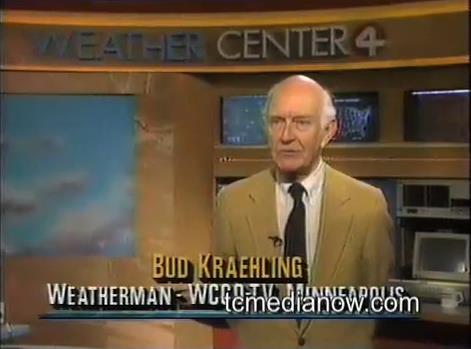

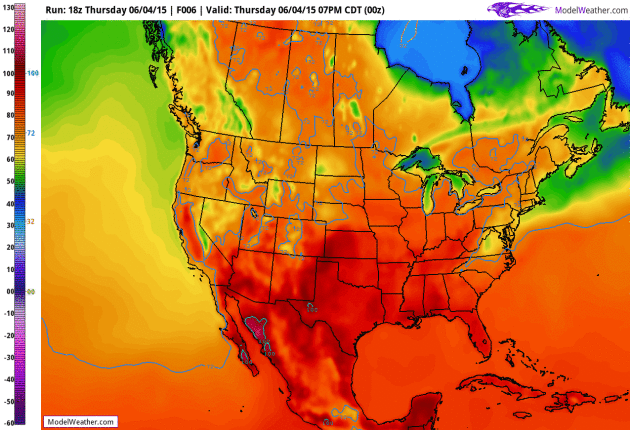


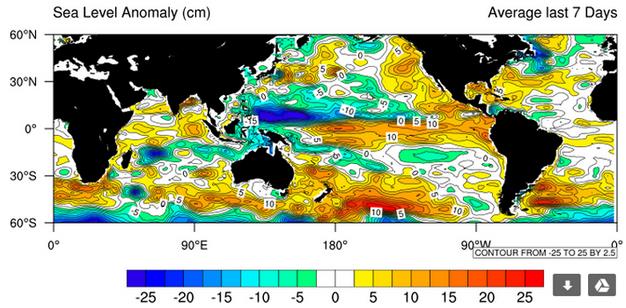
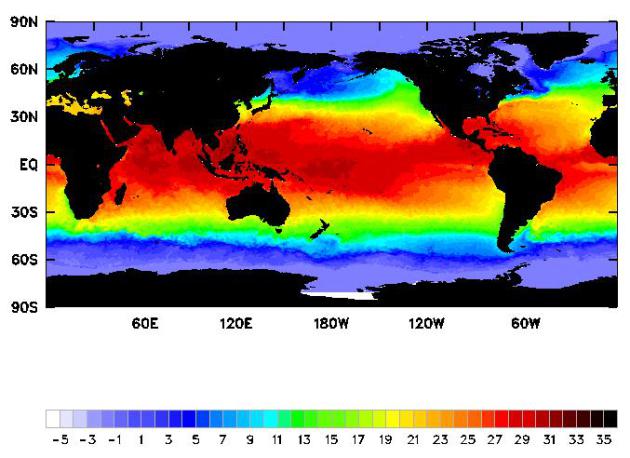


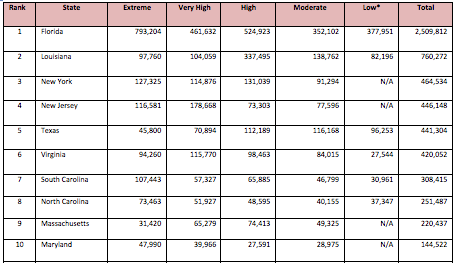
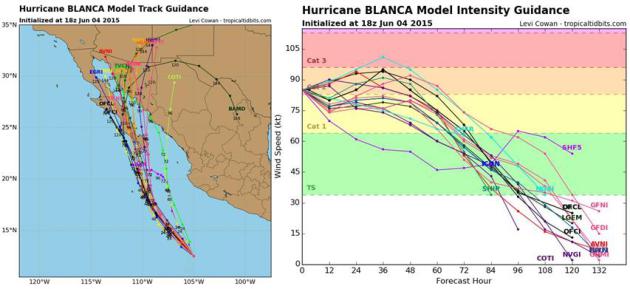
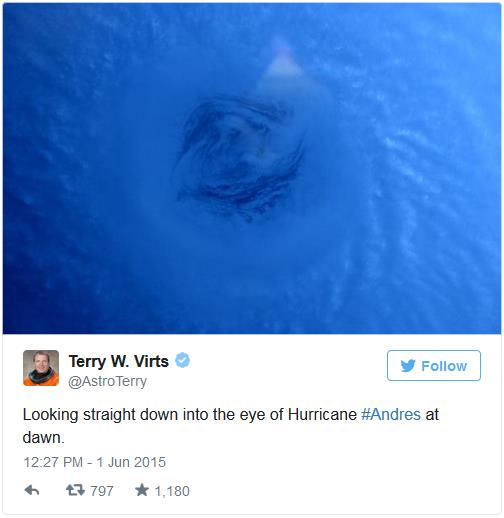

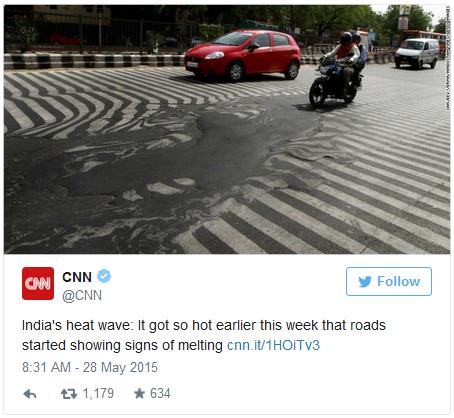
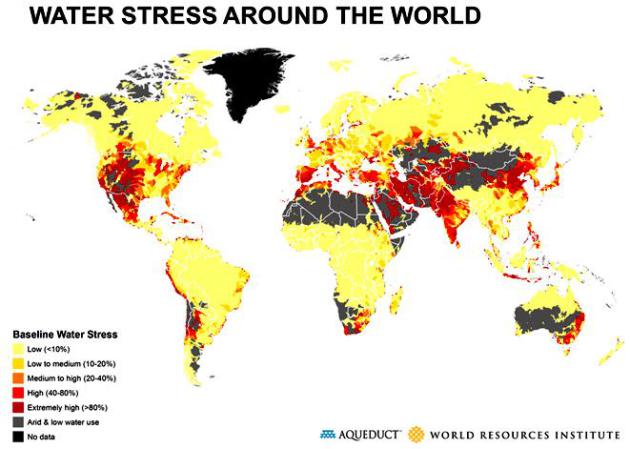

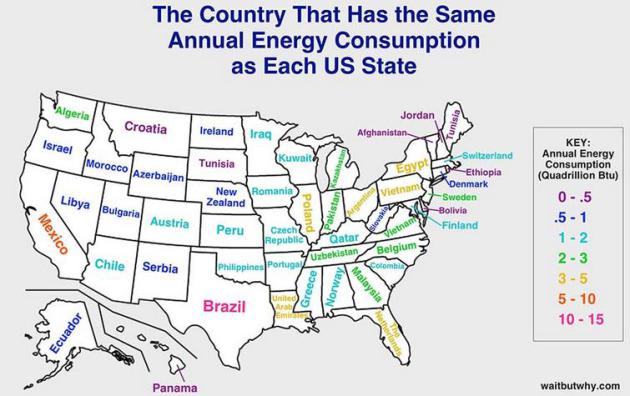


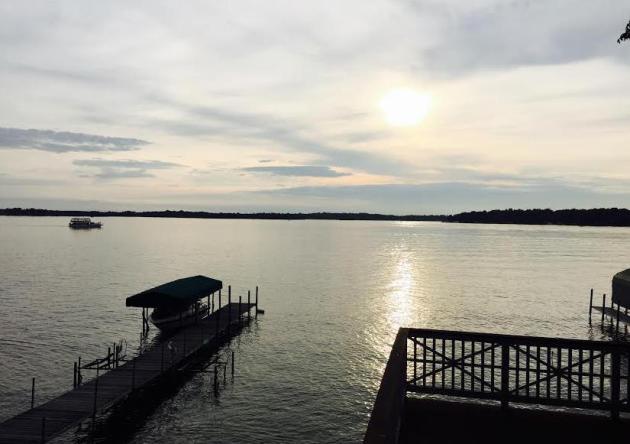
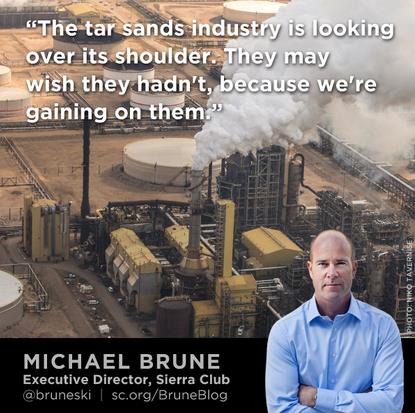


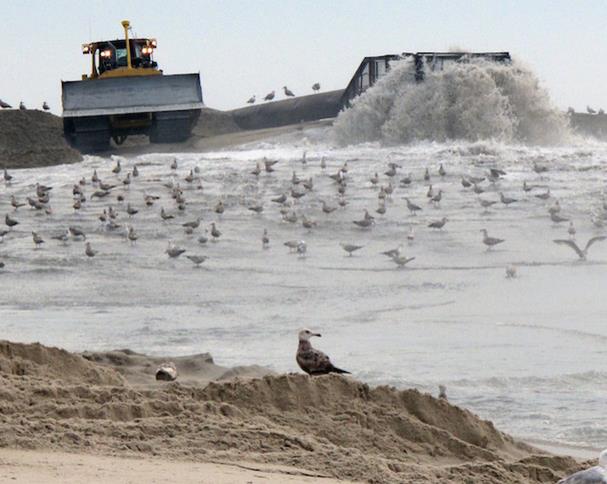

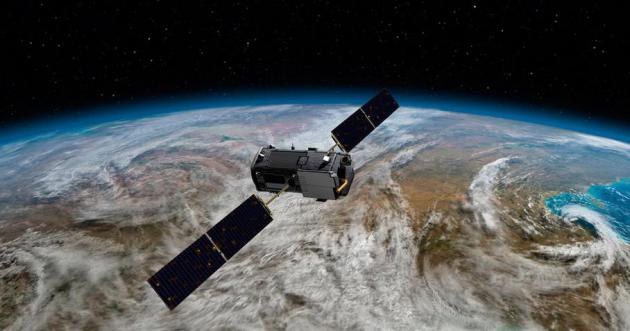
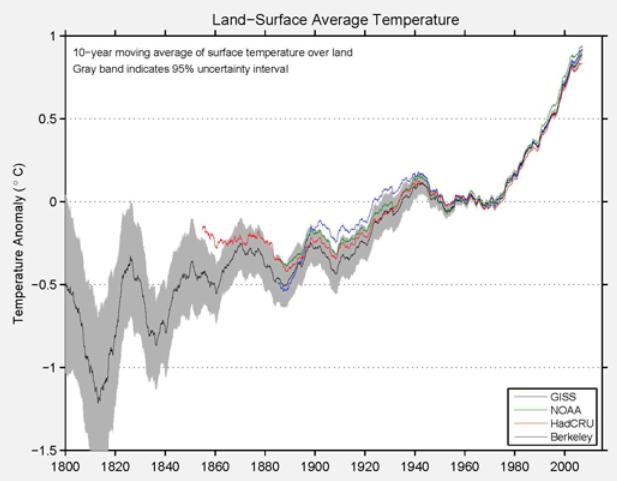
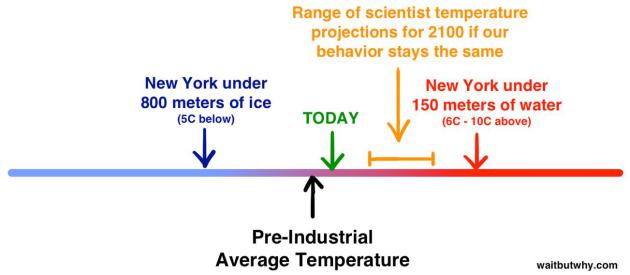


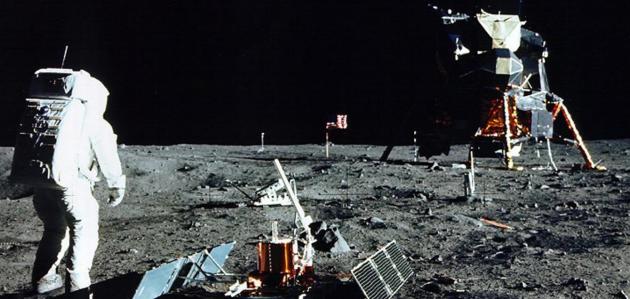
No comments:
Post a Comment